If you have followed this blog for a while, you already know that medieval goldwork embroidery was mass-produced. The designs were used more than once, sometimes even on the same vestment. Survived have mainly the simpler single-figure orphreys or the, possibly block-printed, naive embroidered scenes from Germany. But that’s not all. Even very complex scenes were used multiple times, as is the case for a particular version of the Adoration of the Magi. The design is attributed to the painter Jacob Corneliszoon van Oostsanen. Five different chasuble orphreys from Amsterdam use this design. They were all stitched between the late 15th and early 16th centuries.
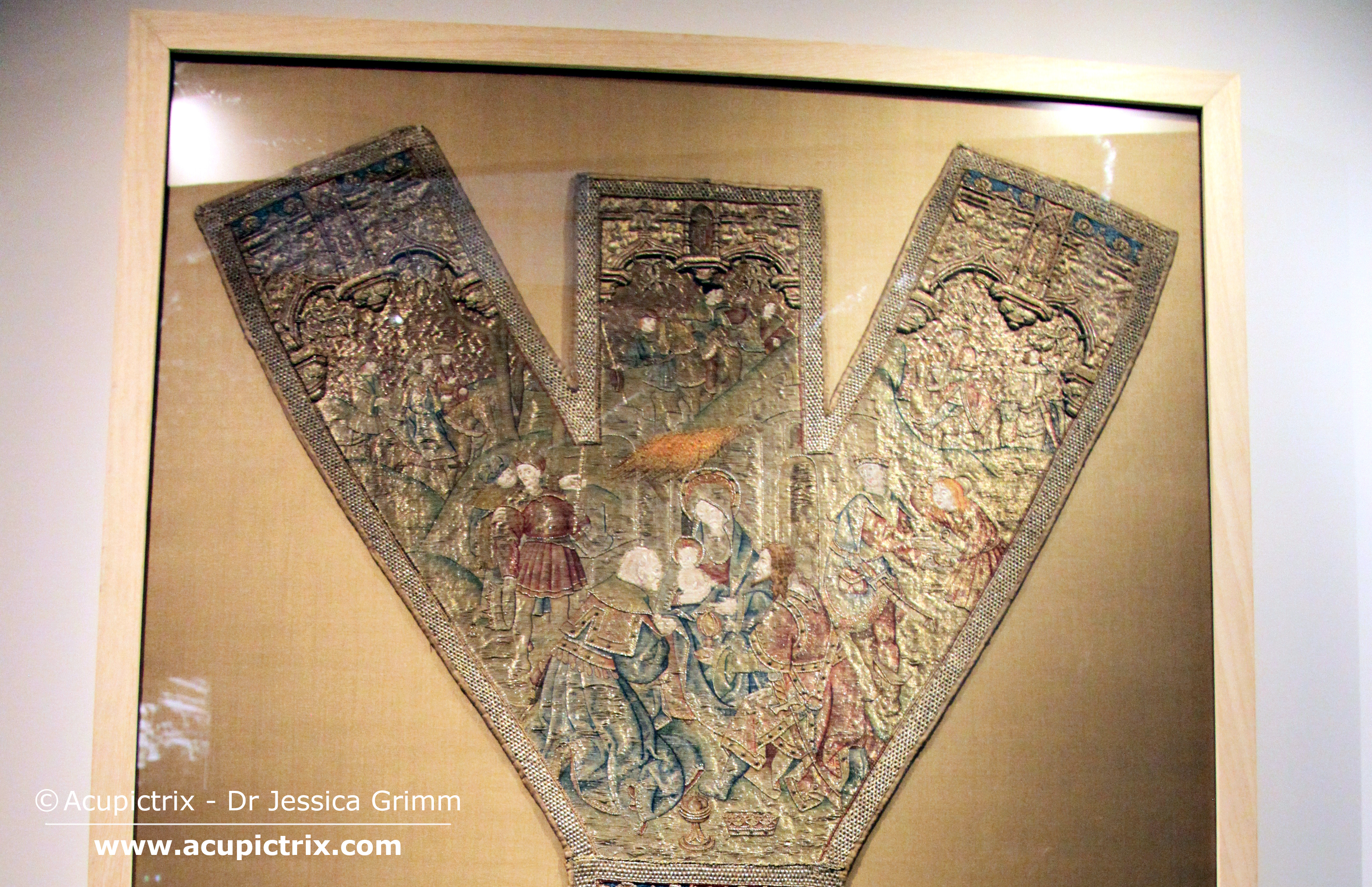
The first example of medieval goldwork embroidery is a chasuble cross (MT 25436) kept at the Musee de Tissus et Arts Decoratifs in Lyon, France. The style of the stitched version of the coat of arms of Amsterdam dates this embroidery before AD 1490. The embroidery mainly consists of or nue. The gold threads run the full width of the design.
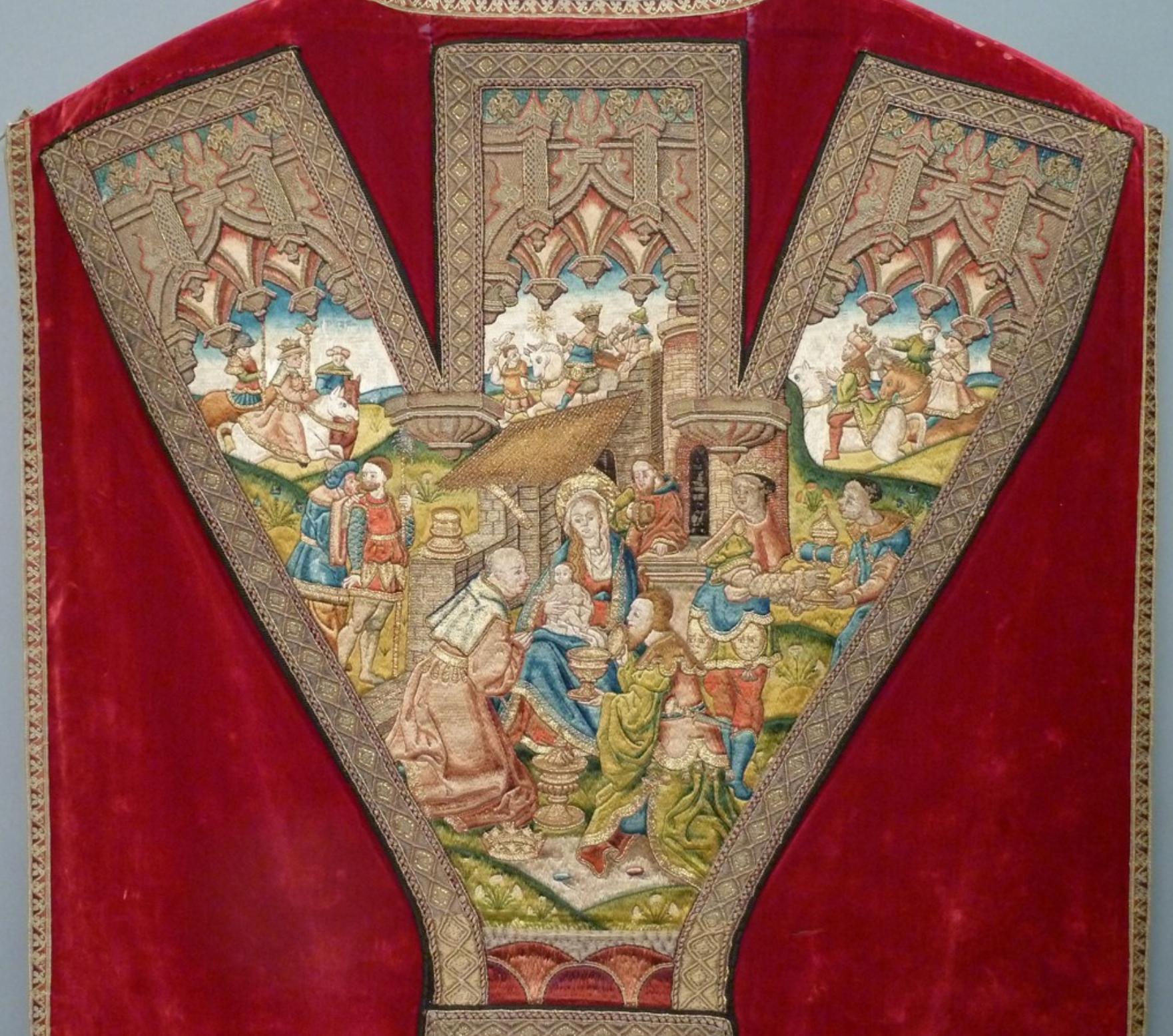
The next medieval goldwork embroidery chasuble is a good example of how the same design can be stitched very differently. There’s no or nue this time. Instead, it is all expertly shaded silk embroidery. And do you see the canopies that enclose the scene at the top? They are totally different from the chasuble cross kept in Lyon, as is the orphrey frame. You can find additional pictures on the museum’s website.
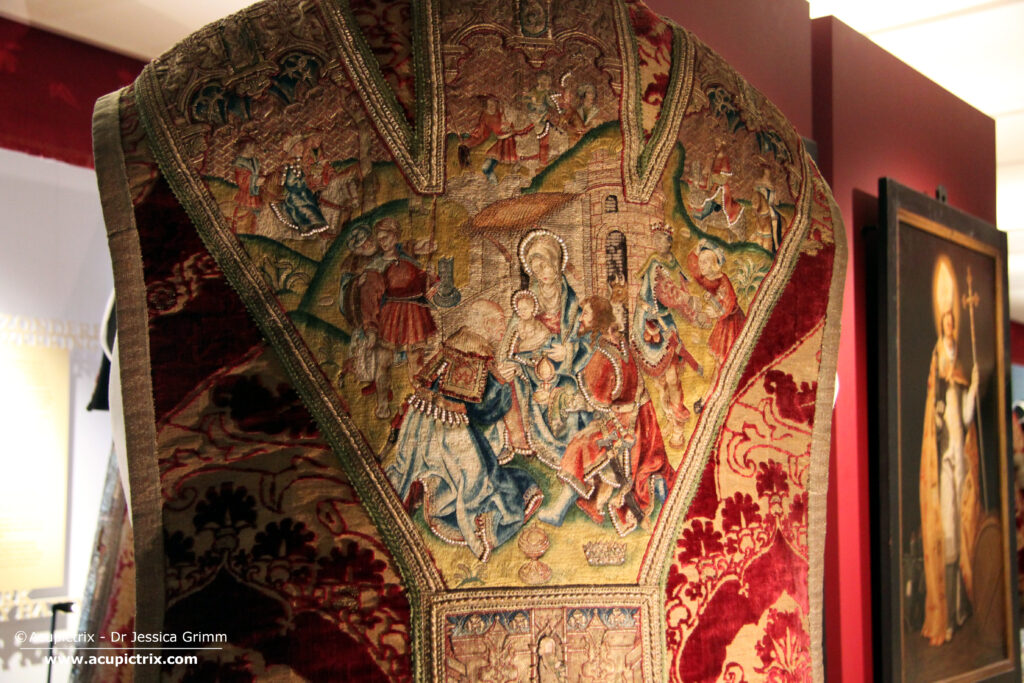
The above medieval goldwork embroidery chasuble is a combination of the other two. It has lots of silk embroidery and a bit of or nue to accentuate parts of the clothing. And then there are the fresh-water pearls. They would have increased the value of this embroidery quite a bit. Although we see yet another type of orphrey frame, the canopies that enclose the scene at the top are the same as seen on the piece from Lyon. You can find additional pictures on the museum’s website.
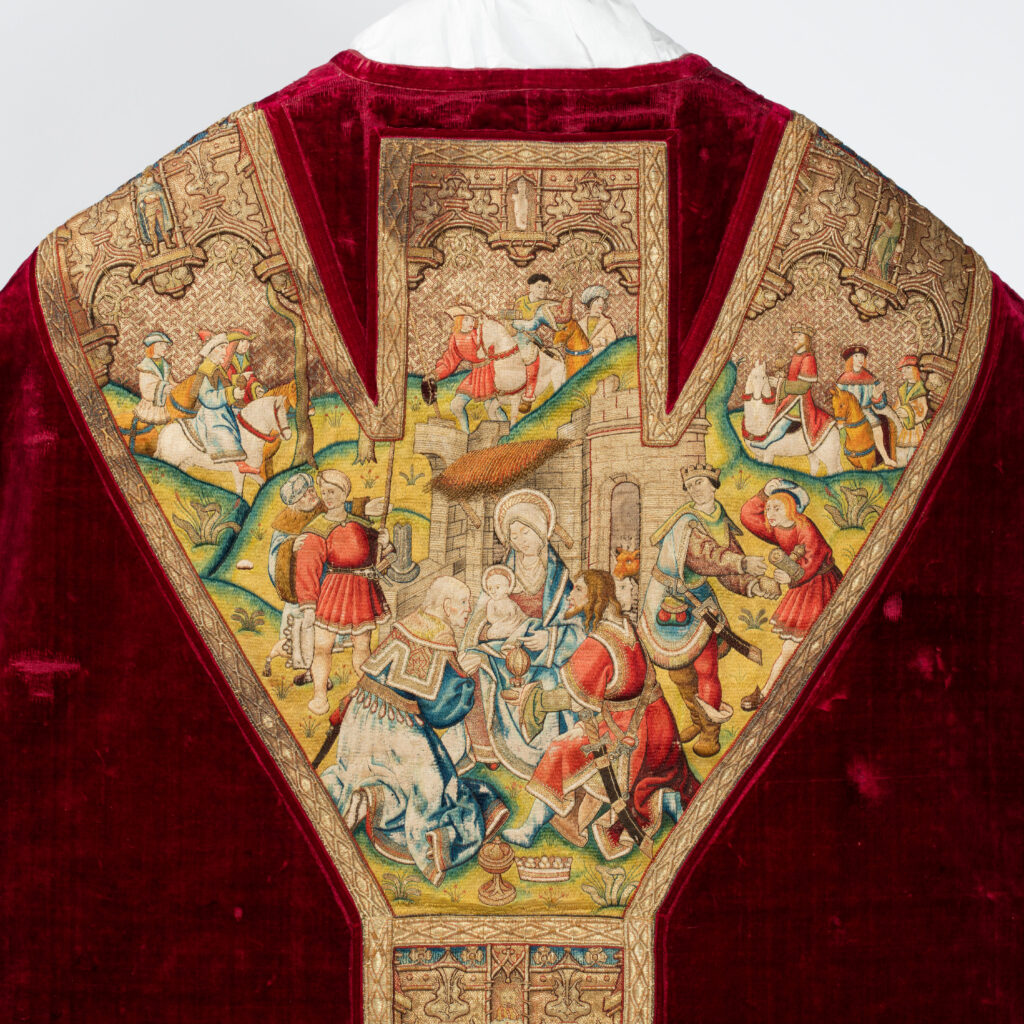
And here is a medieval goldwork embroidery held at the Diocesan Museum in Namur, Belgium. More high-res pictures can be found here. This is an almost exact copy of the one held in Museum Catharijneconvent. The bare white string indicates that this chasuble was once adorned with fresh-water pearls too. The frame around the orphreys is different, yet again.
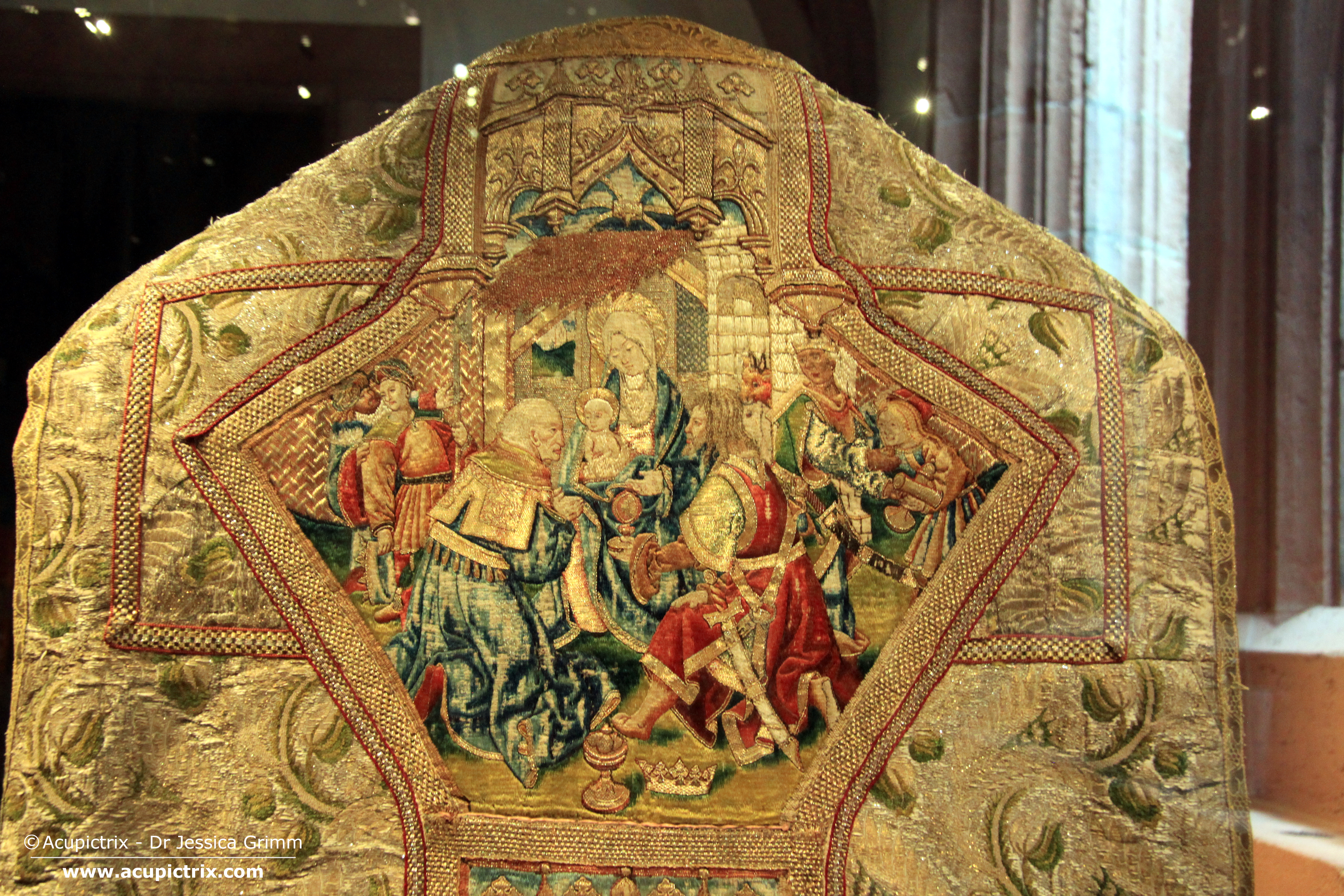
The last example only shows part of the scene. It looks like it has been cut out from the larger embroidery. However, this is not the case. Again, the majority of the embroidery is executed in silk. But parts of the garments have been worked in or nue. The orphrey frame resembles the piece from Lyon. The canopy seems to be a slight variation on the ones seen on ABM t2289.
The above examples of medieval goldwork embroidery give us a glimpse of the workings of a late medieval embroidery workshop. One design could be stitched very differently. Undoubtedly, its size, materials used and stitch technique employed played a major part in determining its value. The differences between the pieces also show how the whole orphrey was planned. The canopies and the orphrey frame were likely specific for a certain master and/or workshop. Instead of signing your work, you made sure that you had a particular style of canopy and/or frame. This might also have come in handy when you needed to prove that the work was yours. The central scene was commissioned once from a painter. All members of the Amsterdam guild shared the resulting pricking. The finished embroideries ended up in churches in Oudewater (c. 50 km from Amsterdam), Loenen (c. 100 km from Amsterdam) and at a small 17th century church built by the Van Groesbeek family (Dutch noble family) in Namur province, Belgium. From which church the embroideries now kept in Lyon and Frankfurt originally came from is unknown.
I hope you enjoyed seeing these five examples of the same design. Although the design is the same, the originality of the different embroidery masters is evident. But it can challenge our modern ideas of art, value and originality. Perhaps a bit like painted canvasses today?
Check out this blog post to compare the other embroidered scenes on these vestments.
Literature
Descatoire, C. (Ed.), 2019. L’art en broderie au moyen âge: Autour des collections du musée de Cluny. Musée Cluny, Paris.
Leeflang, M., Schooten, K. van (Eds.), 2015. Middeleeuwse Borduurkunst uit de Nederlanden. WBOOKS, Zwolle.
Stolleis, K., 1992. Der Frankfurter Domschatz: Die Paramente: Liturgische Gewänder und Stickereien 14. bis 20. Jahrhundert. Waldemar Kramer, Frankfurt am Main.
